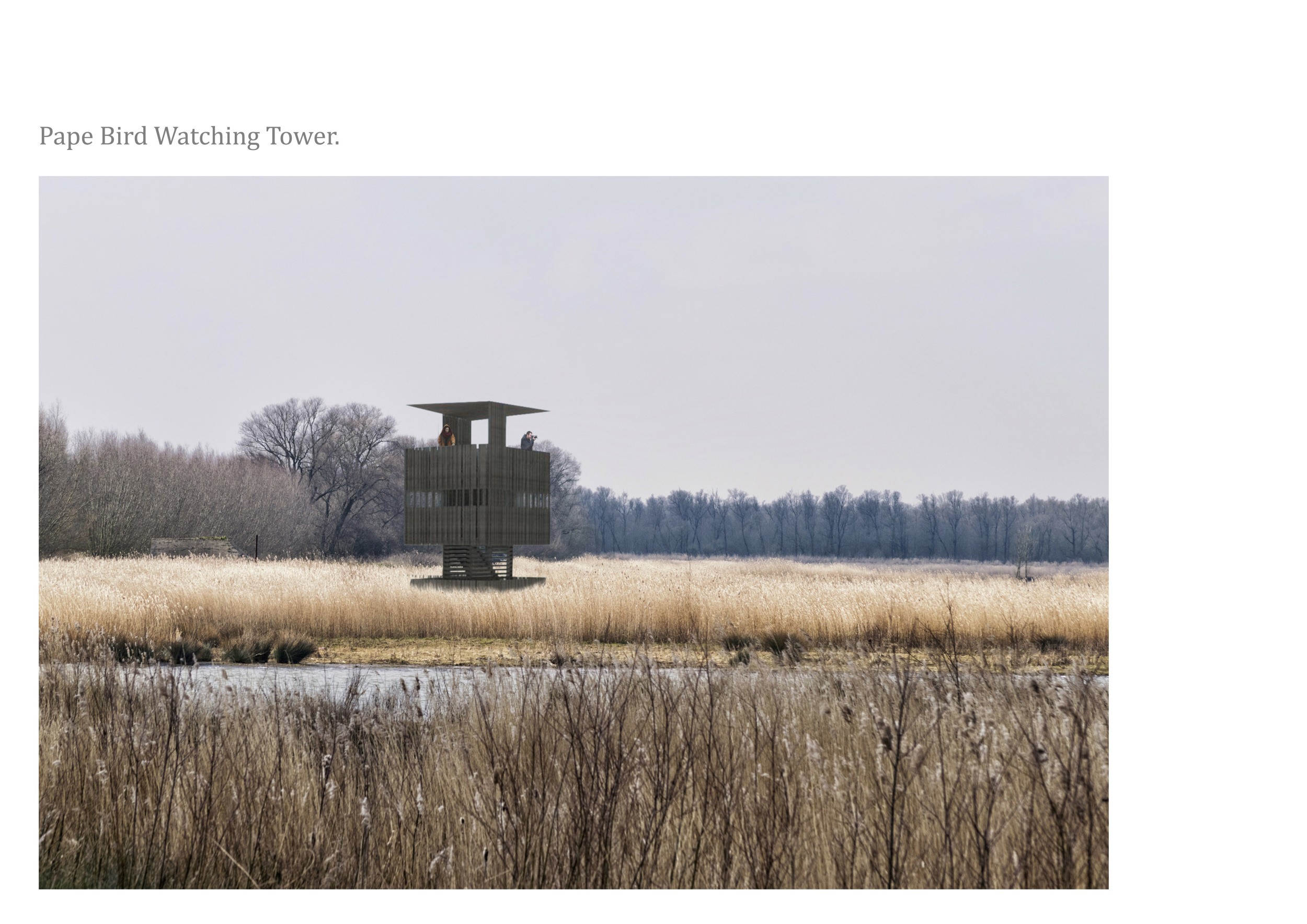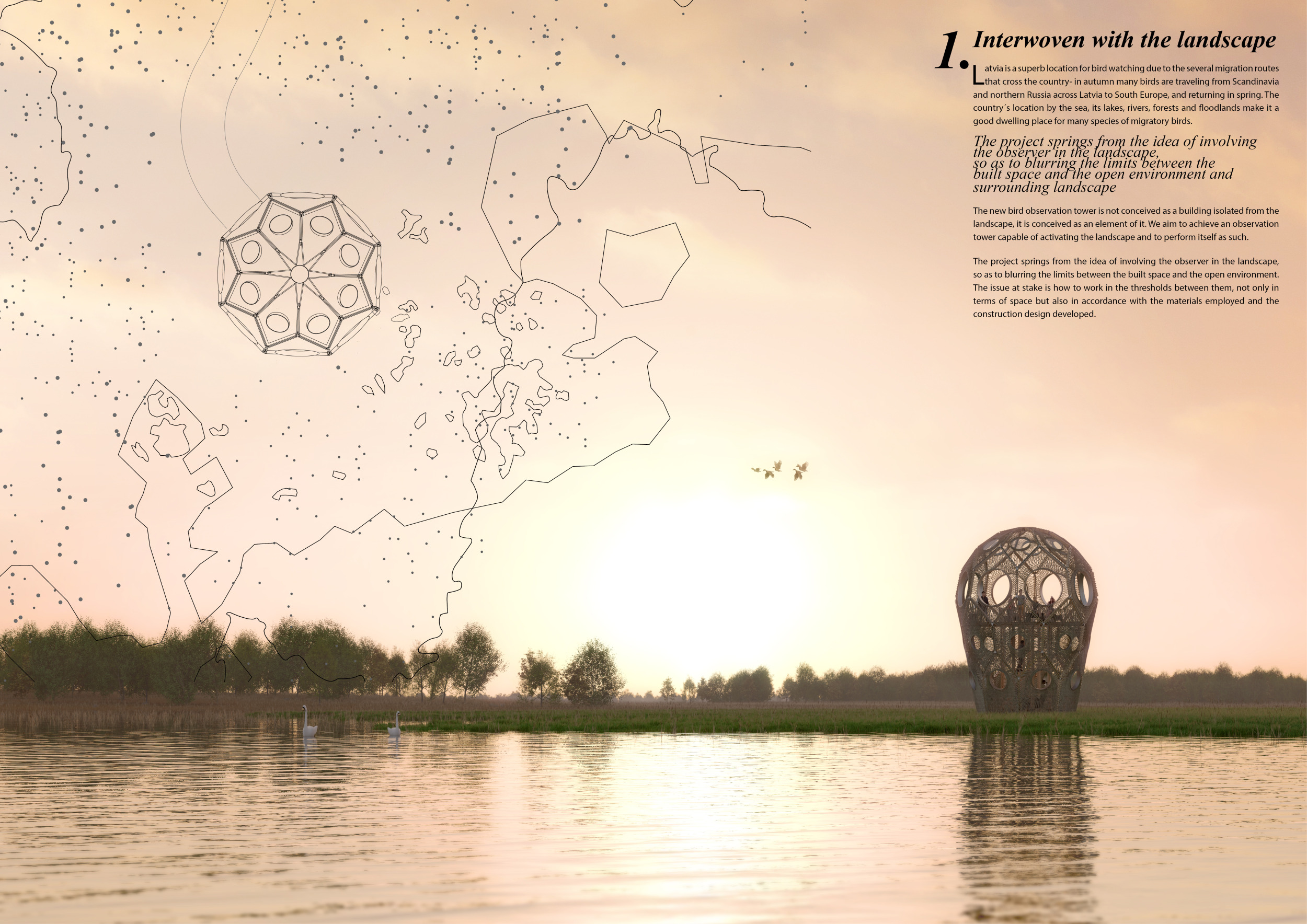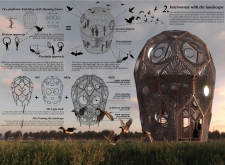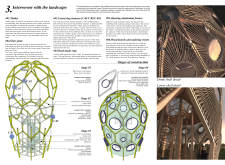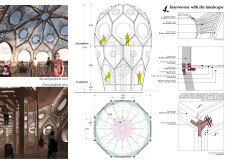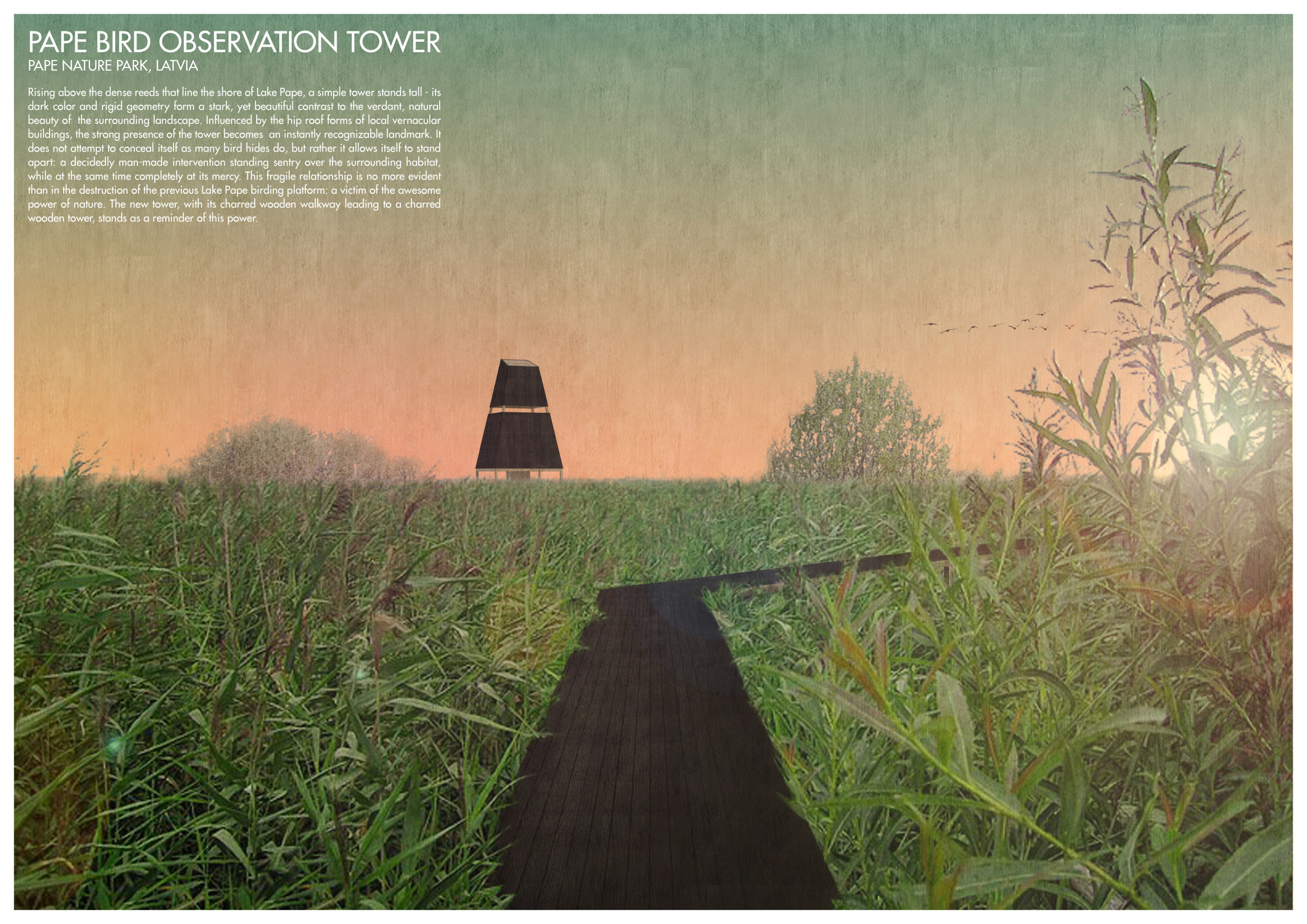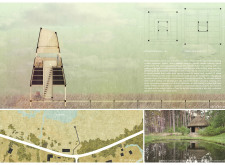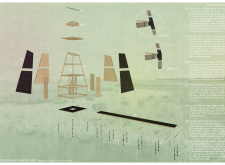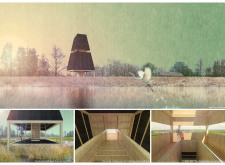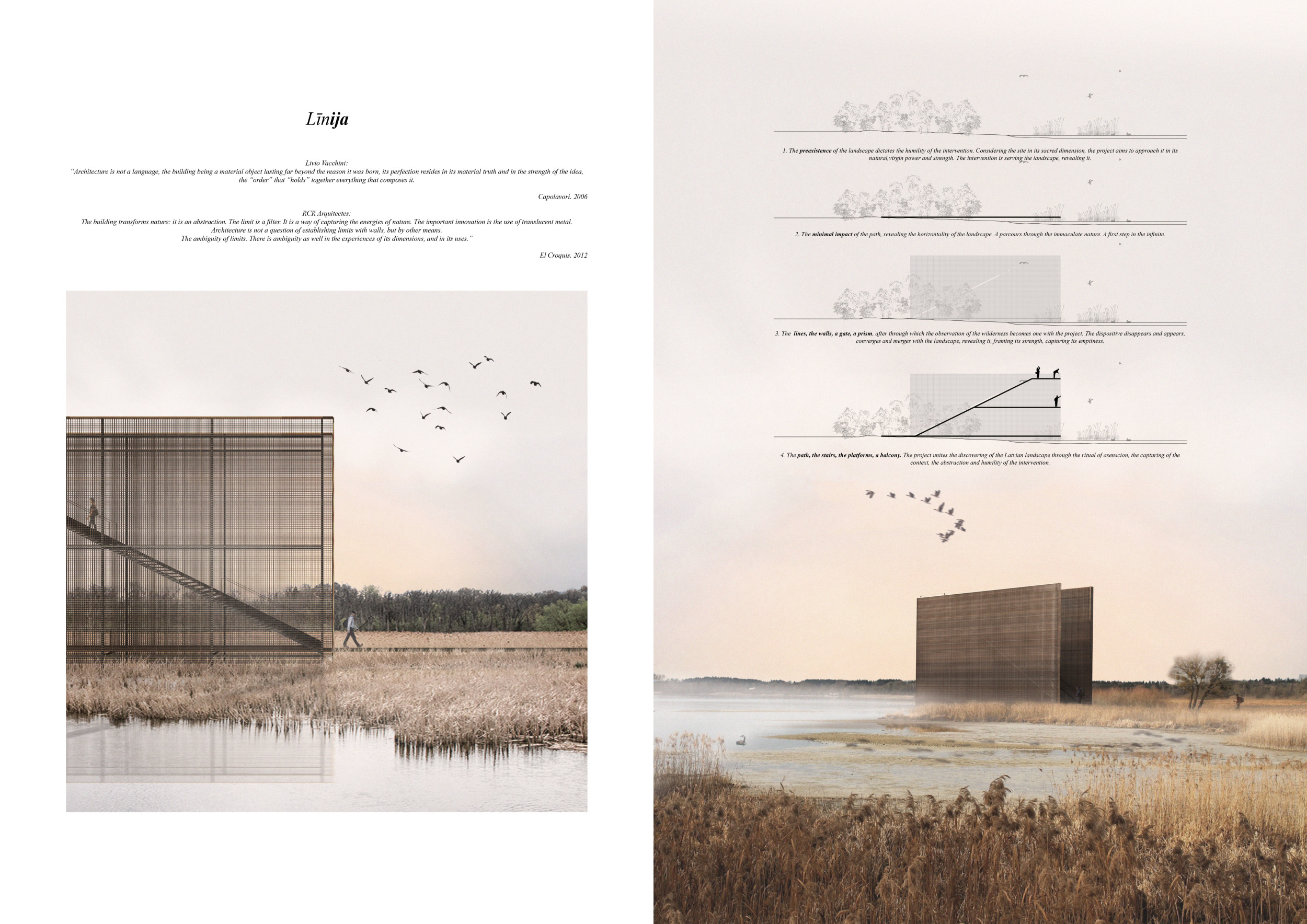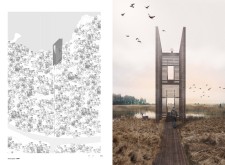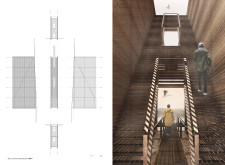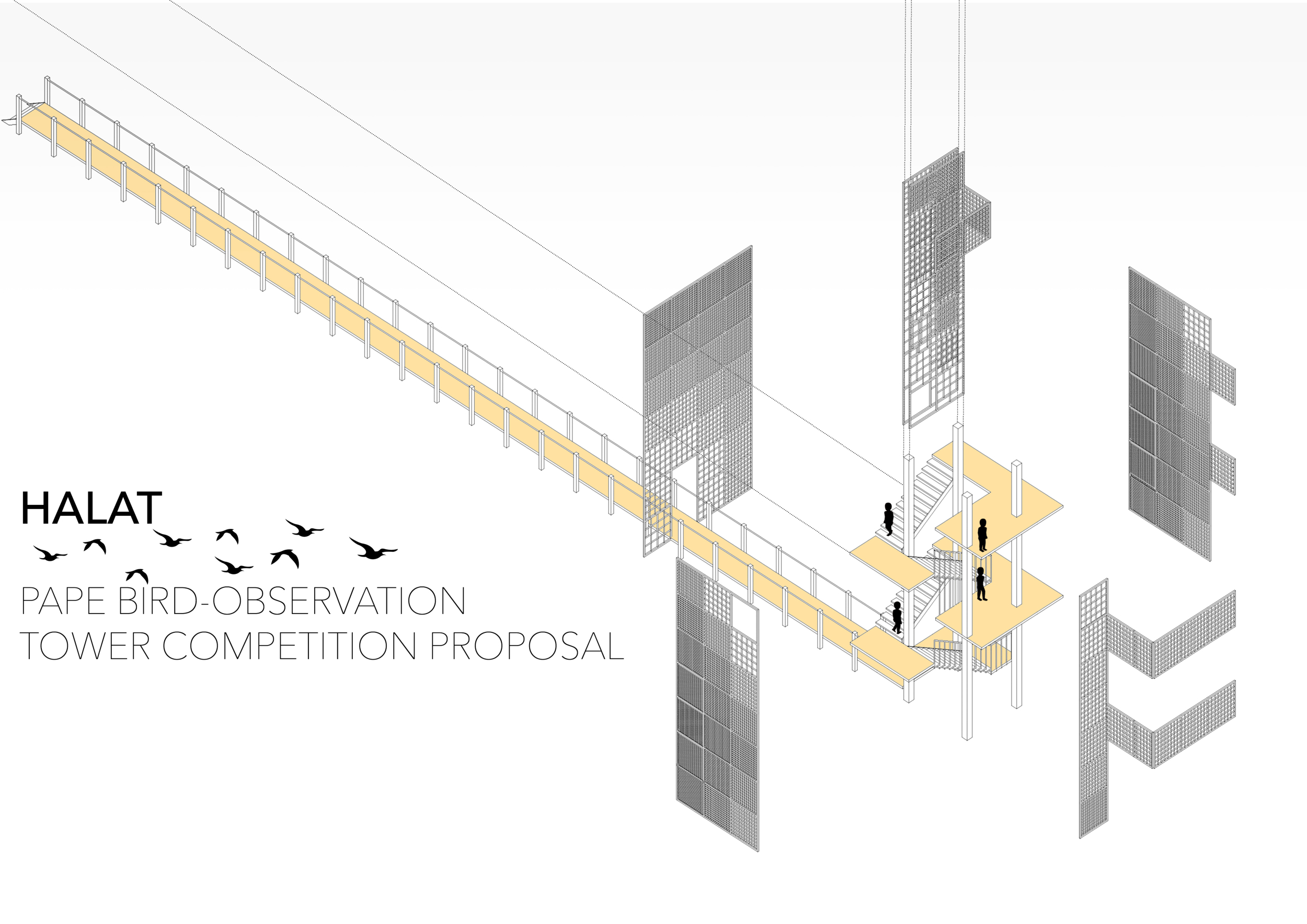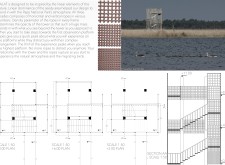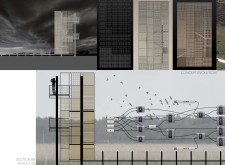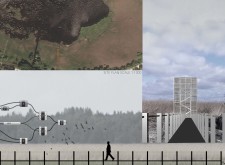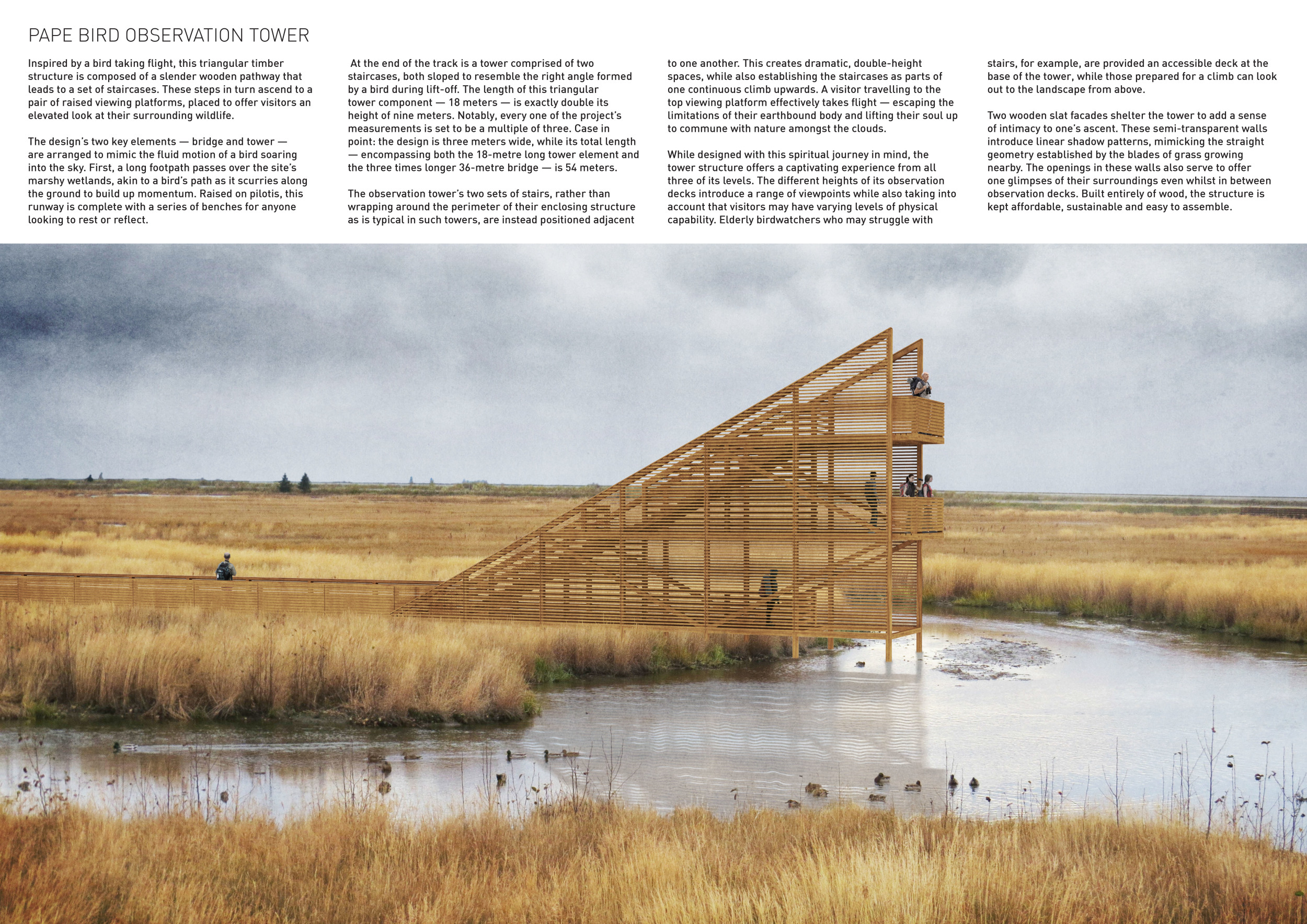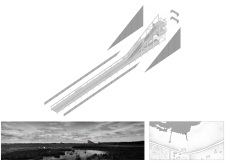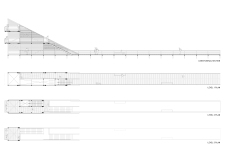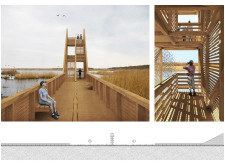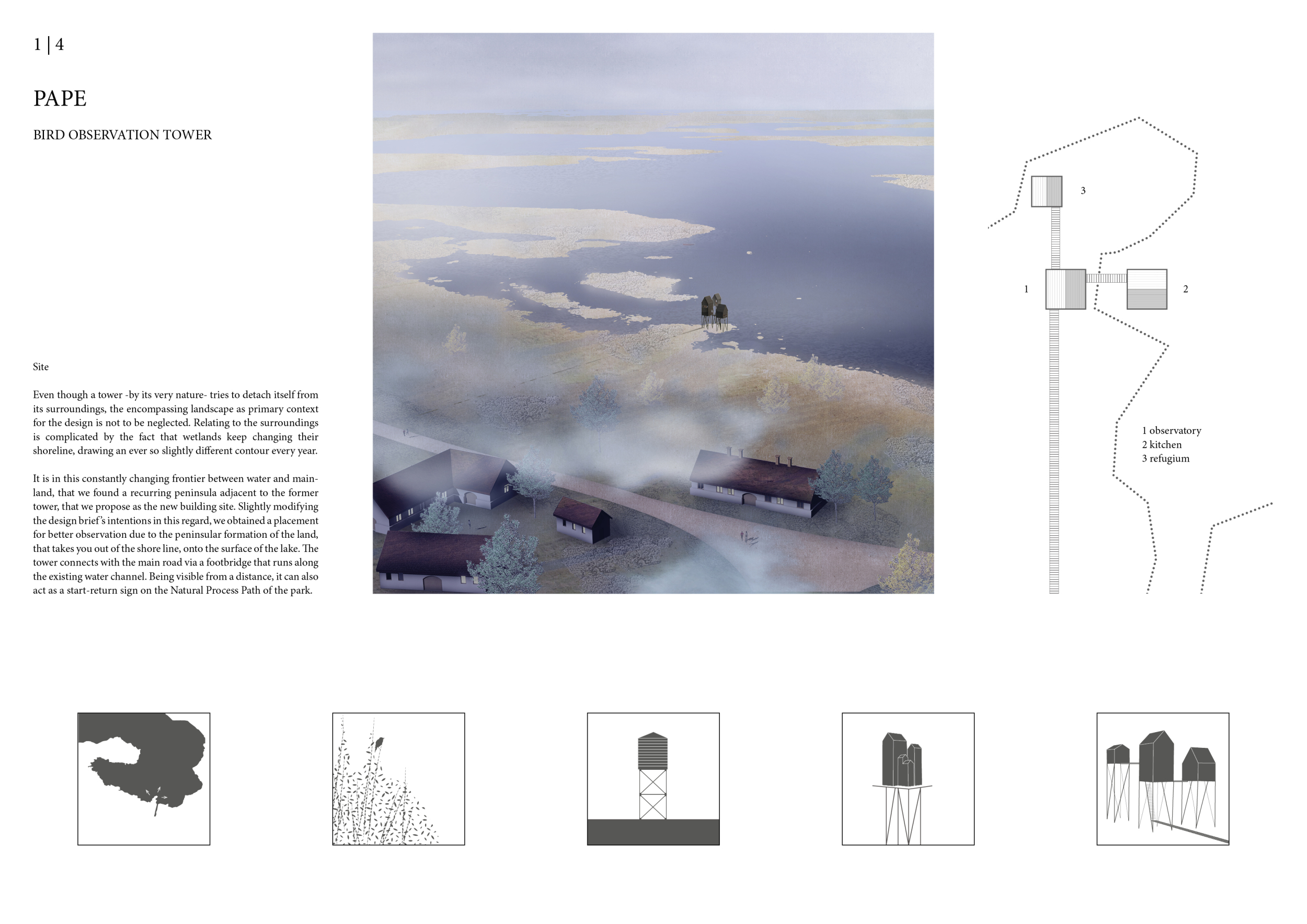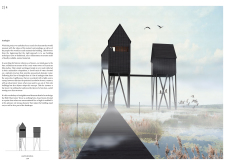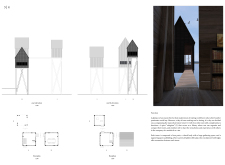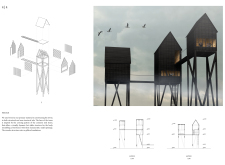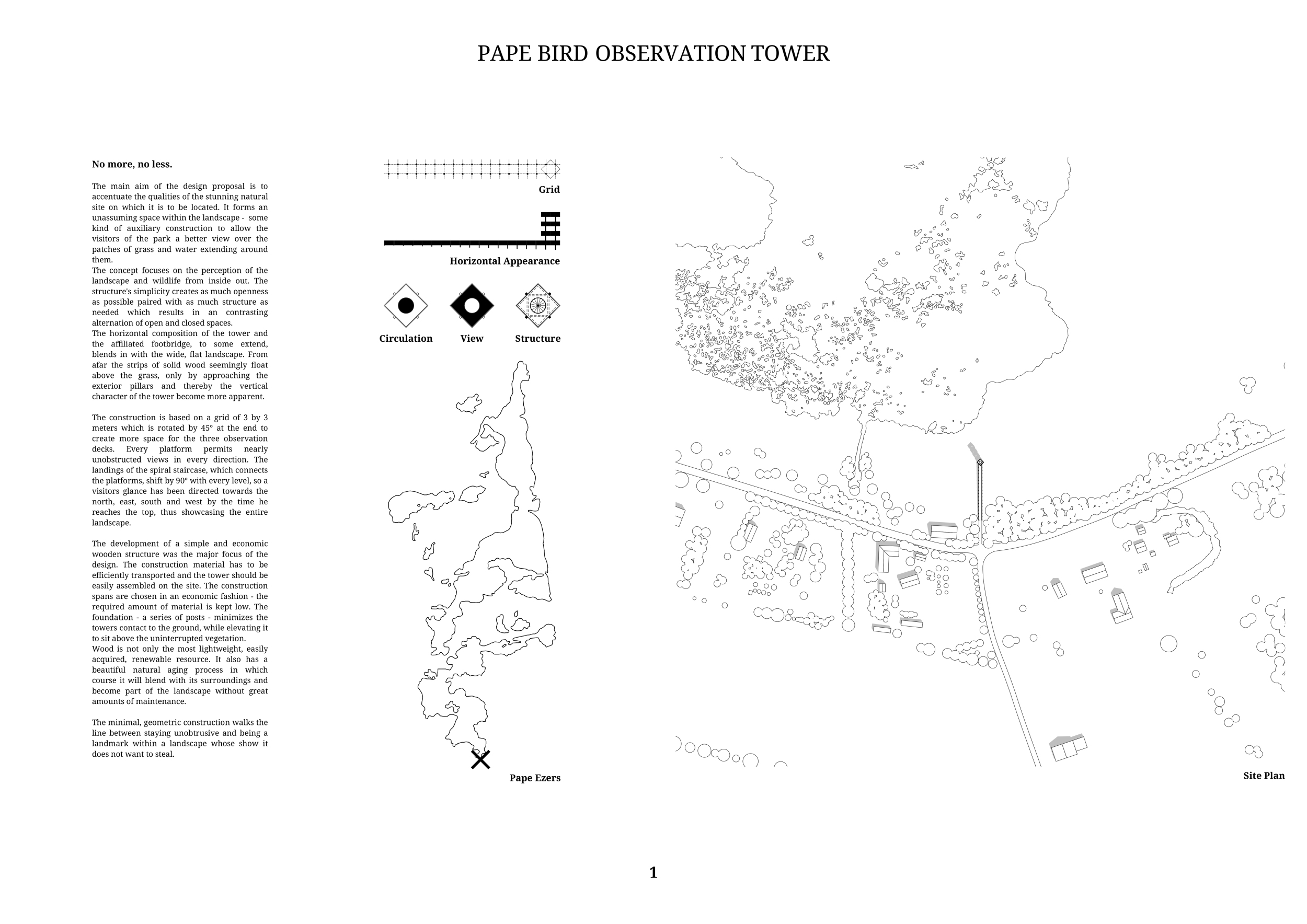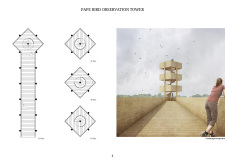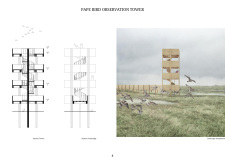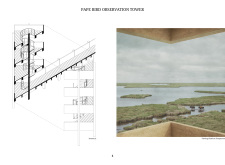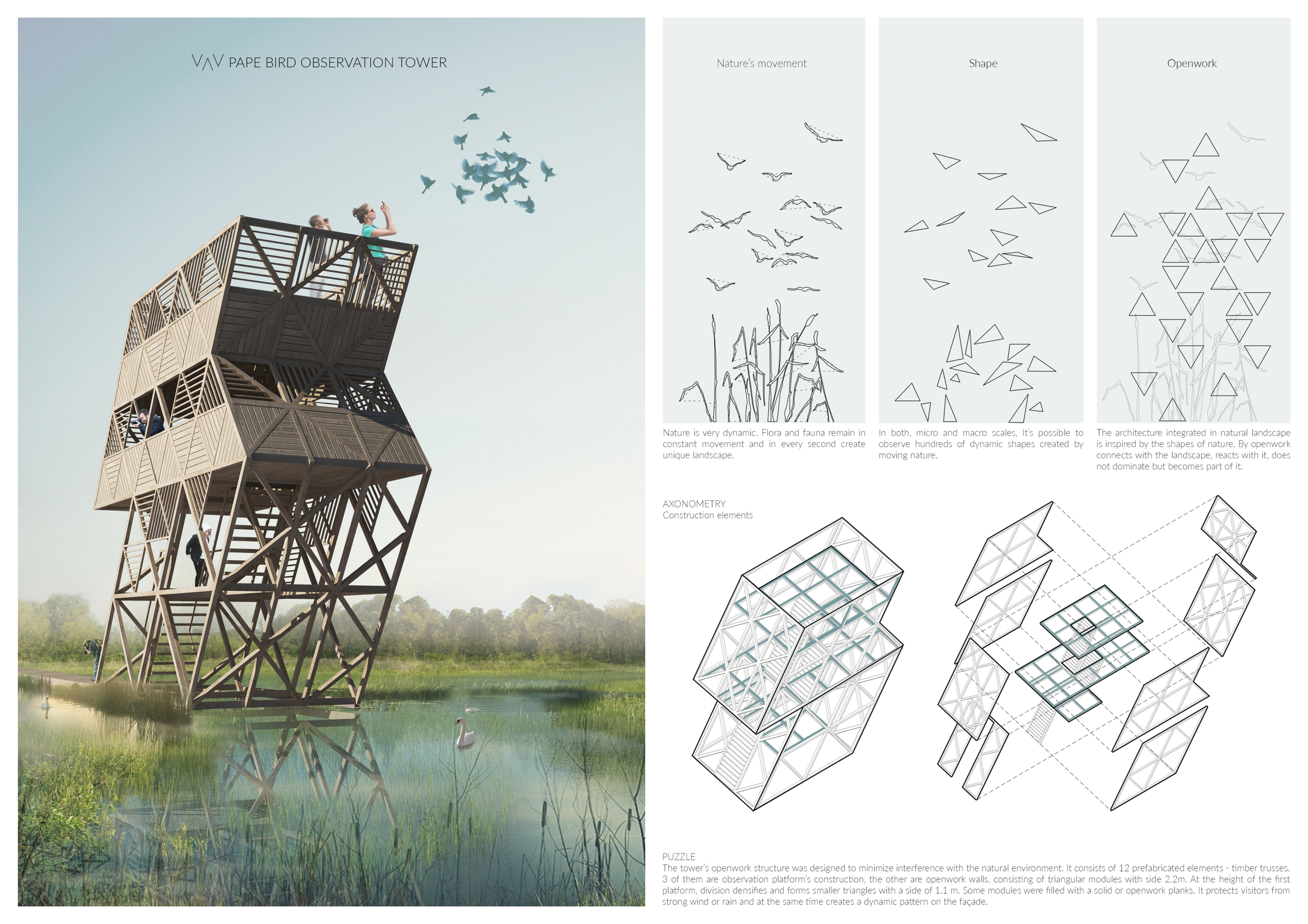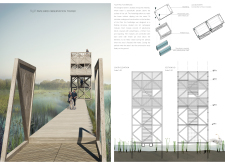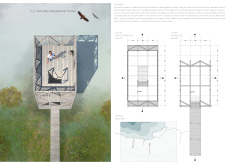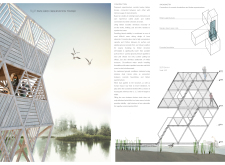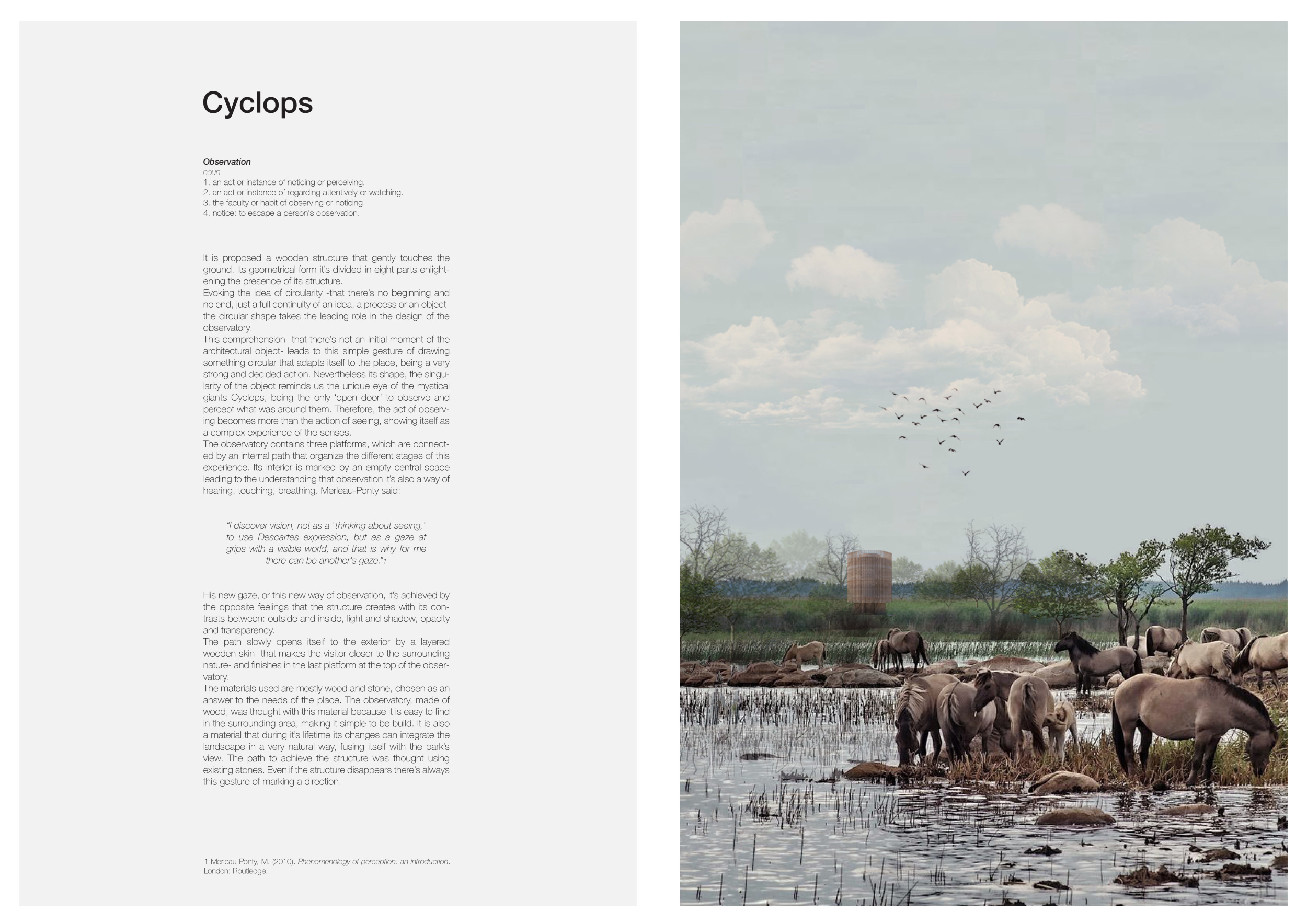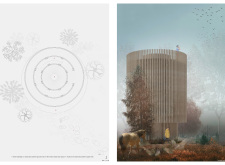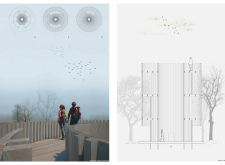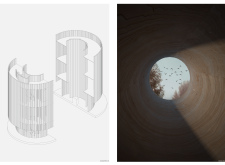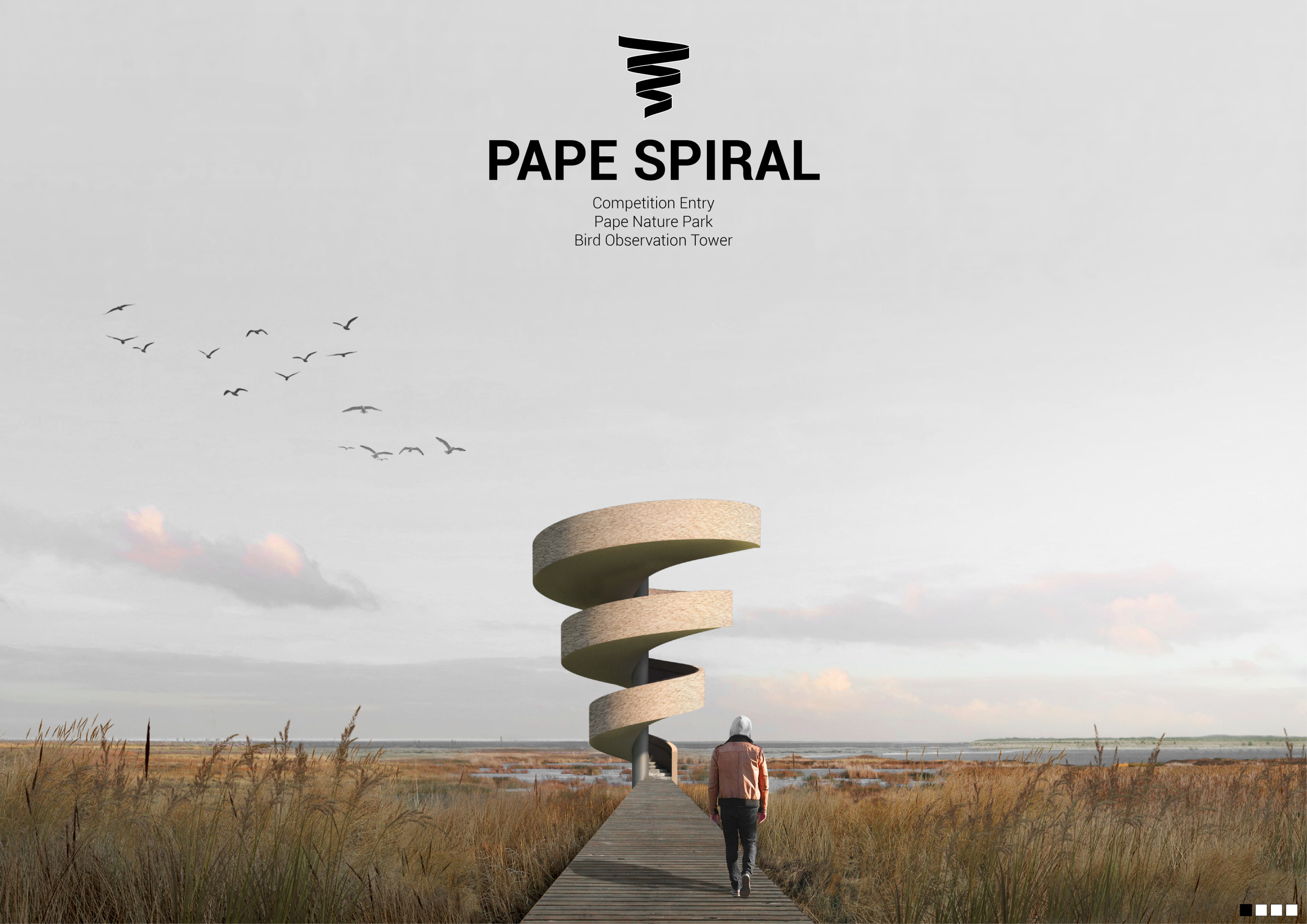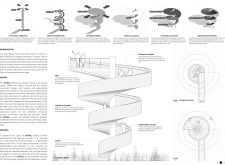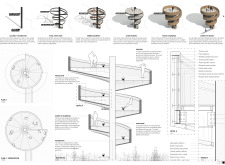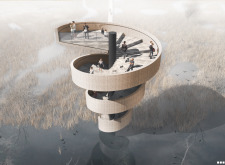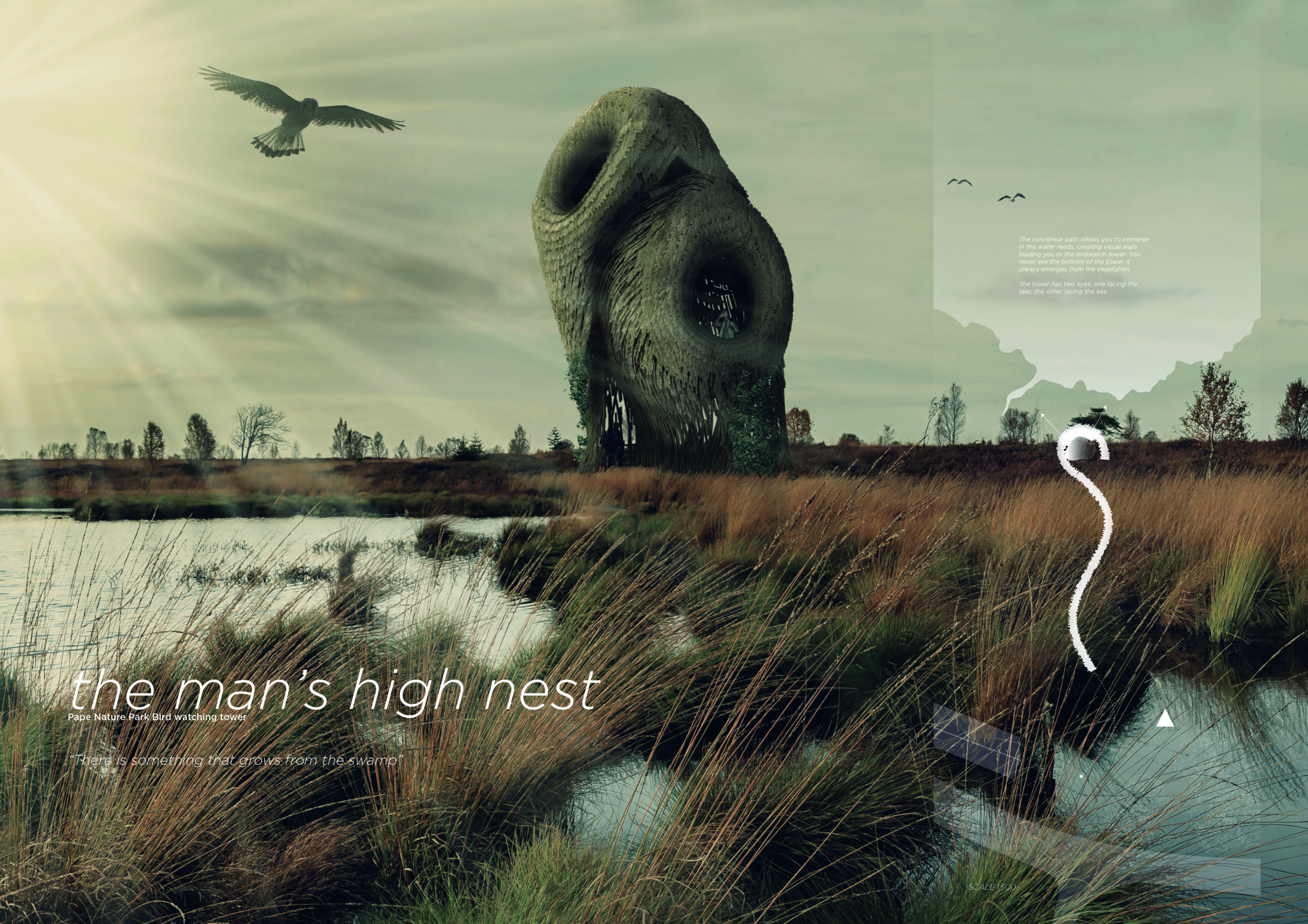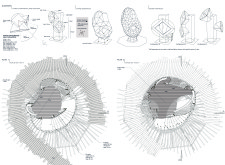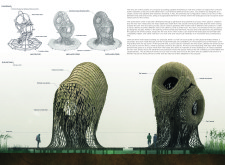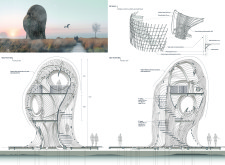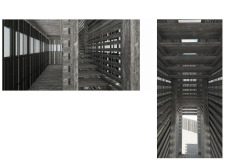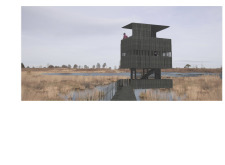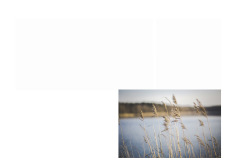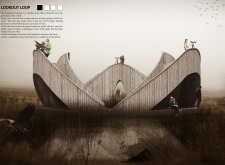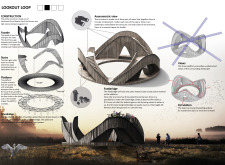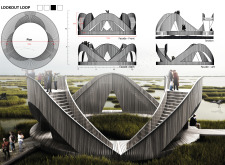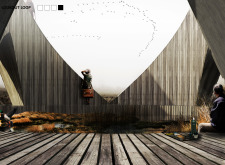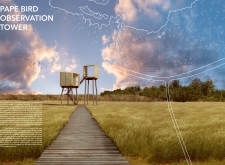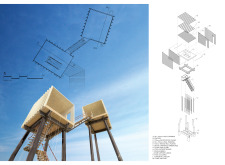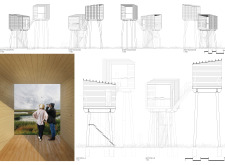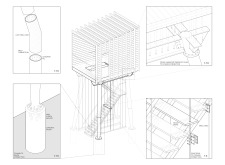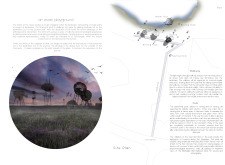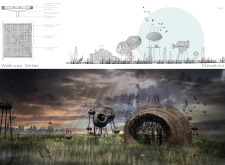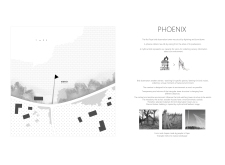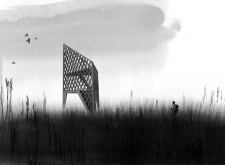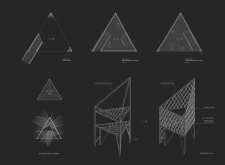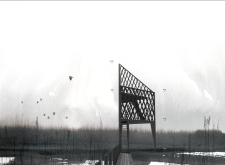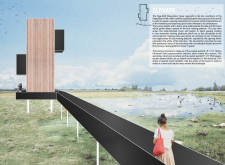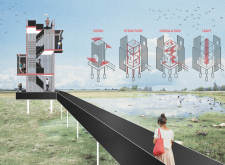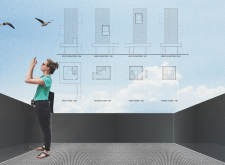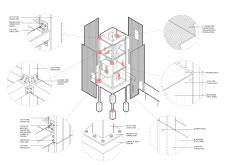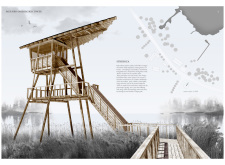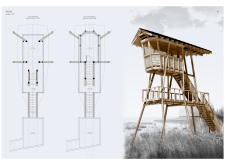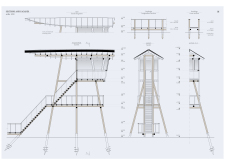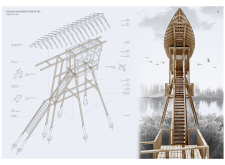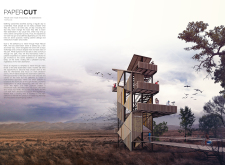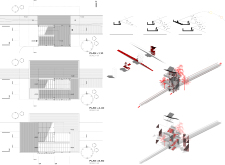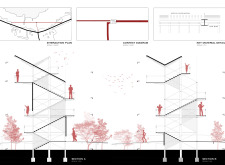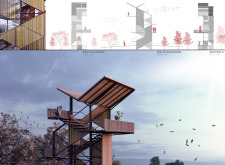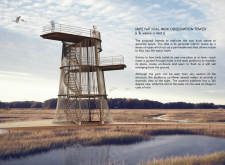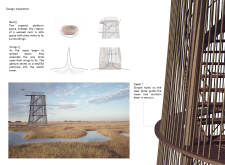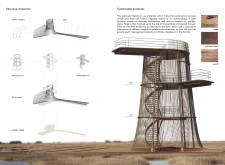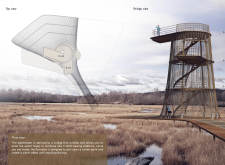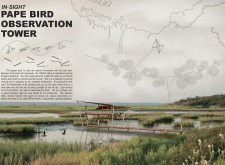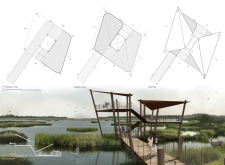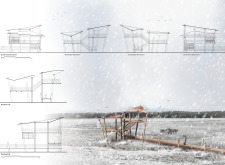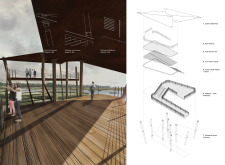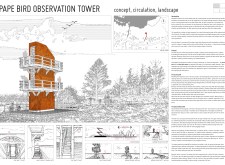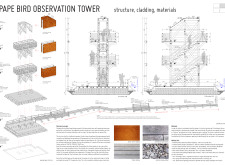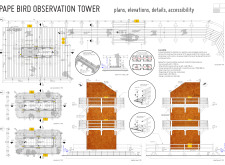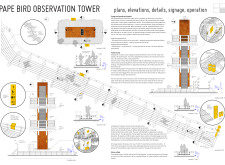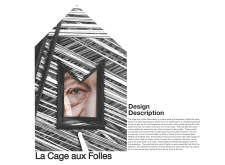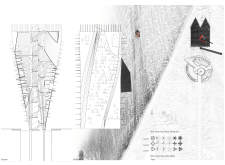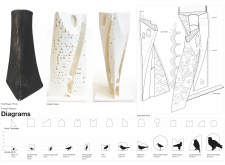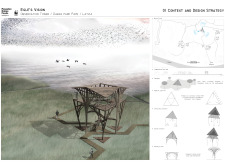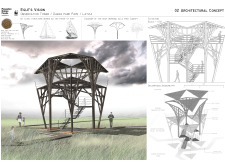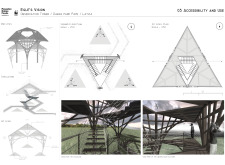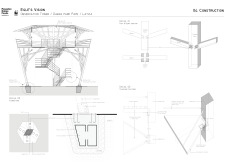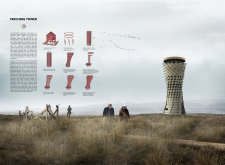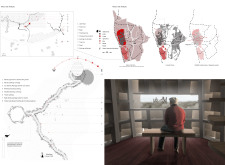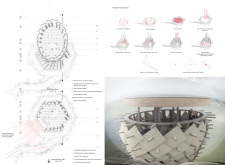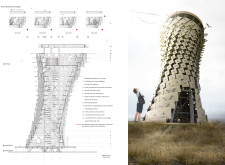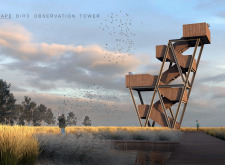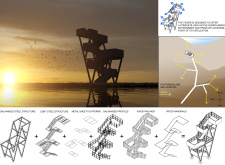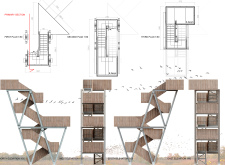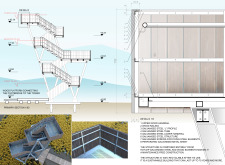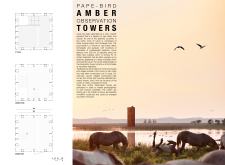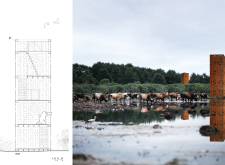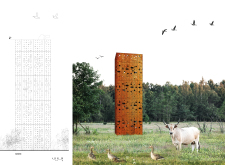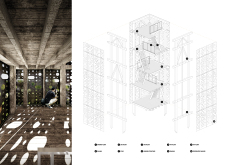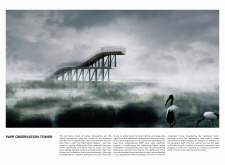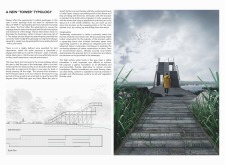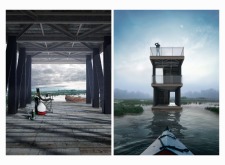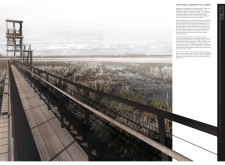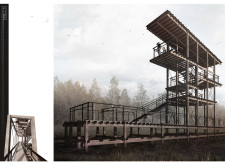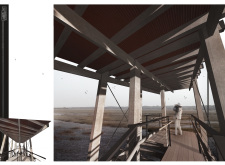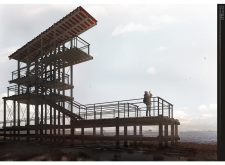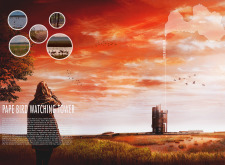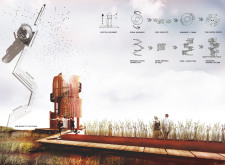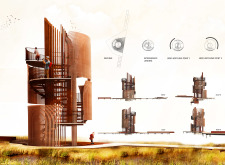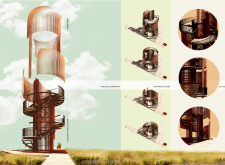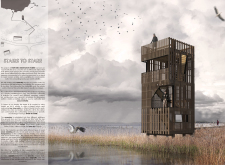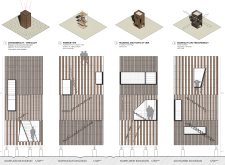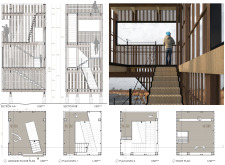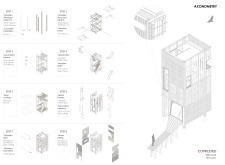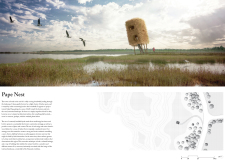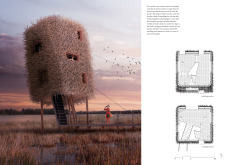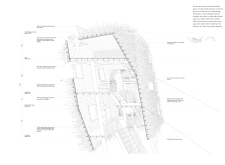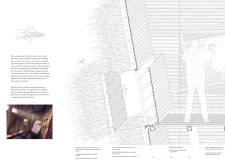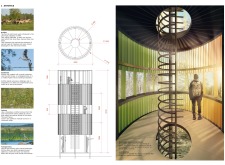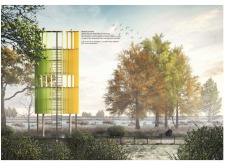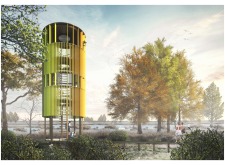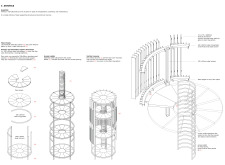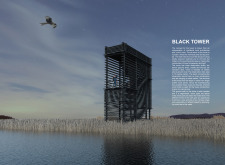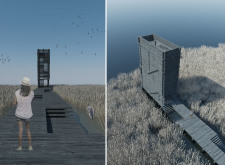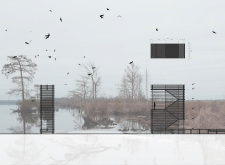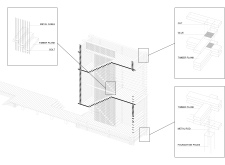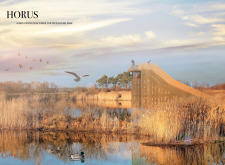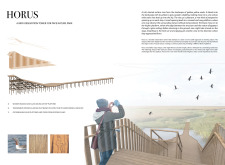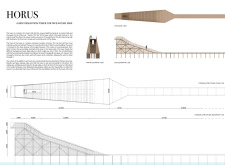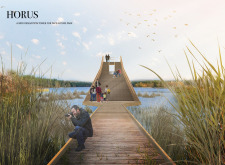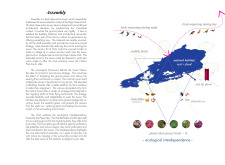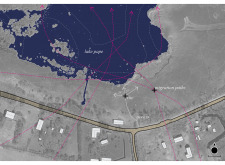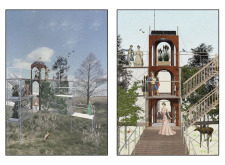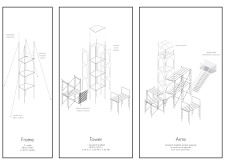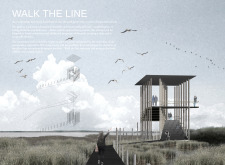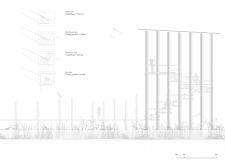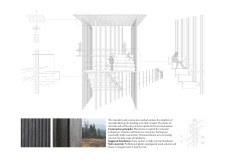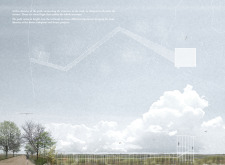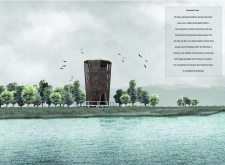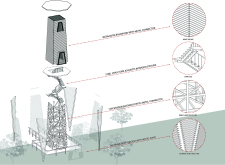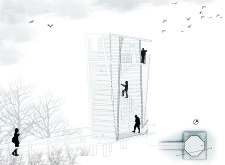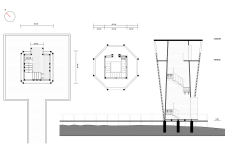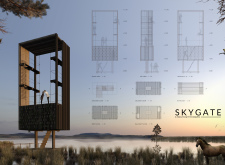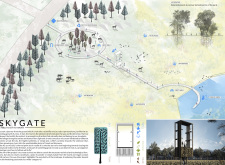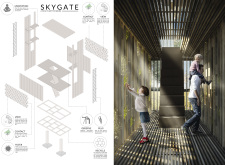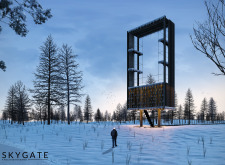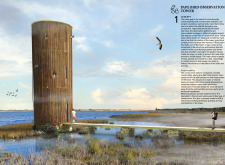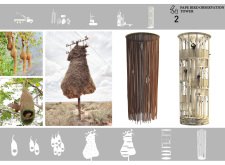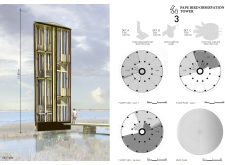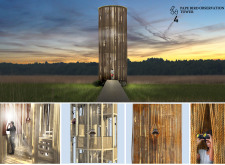Introduction
The Pape Nature Park in south-western Latvia opened in 2003 with the ambition of protecting the region’s wetlands. The nearly-11,000-hectare park includes important nesting grounds for 250 species of migrating birds within the marshes situated at the limit between the Papes Lake and the sea.
The Pape Bird Observation Tower competition is the first of a series to be organised by Bee Breeders in collaboration with the support of Pasaules Dabas Fonds, Latvia’s leading nature conservation fund. Here, participants were challenged with designing a new bird observation station, to replace an existing structure built in 1966 and destroyed by fire. The jury evaluated entries based on a number of factors, including sensitivity to the environment, potential to serve as a landmark, functionality, constructability and economy.
The observation tower will be used primarily to record annual migratory habits of an estimated 50,000 birds, as well as to allow park visitors the opportunity to observe the park’s natural resources. In this light the jury considered functionality and sustainability critical. First, the proposed structure must permit users the ability to observe birds and other migratory animals in a manner that is simultaneously protective –visitors must be concealed to some level from frightening off animals – and open to 360-degree views. Second, the observation tower must have the capacity to be built with minimal disruption to the Paper Nature Park habitat.
Participants were asked to follow strict size guidelines. The observation tower must have a maximum height of 11m and at least two observation platforms. Despite these constraints, the jury found that entries proposed a wide and exciting variety of enclosure materials and structural forms. Modularity played a key factor in the majority of submissions, as did ease of construction within the difficult marshland setting. Designs also included a number of striking raised walkway designs for connectivity from the nature trail to the observation tower.
Each of the winning entries has the capacity to become an important architectural landmark and observational tool for the park. The high quality of the six honorable mentions reflects the outstanding level of work submitted across the board. Bee Breeders would like to thank each entrant for their participation and hard work.
1st Prize Winner
Interwoven with the landscape
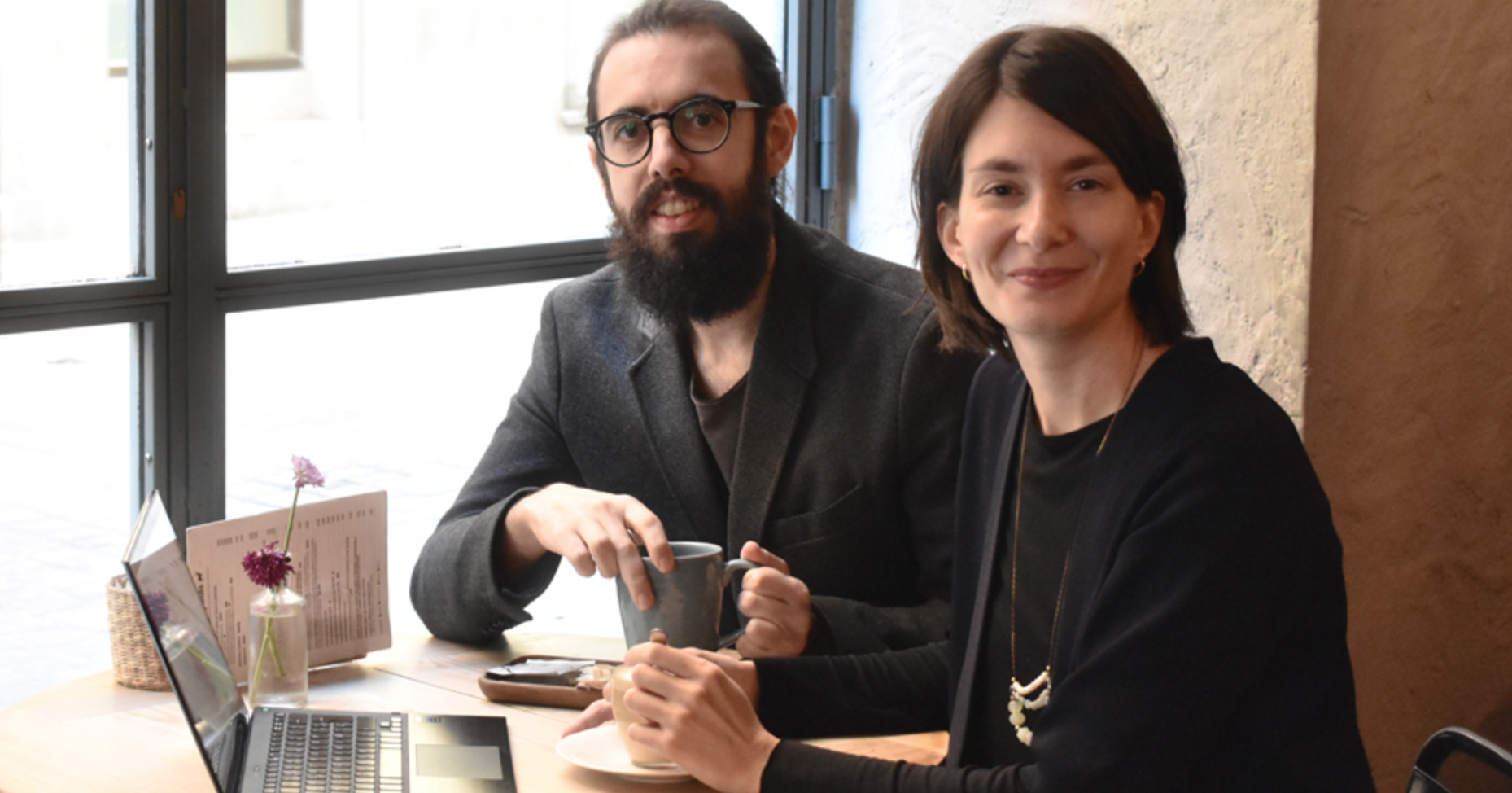
Participating in competitions is a perfect opportunity to face this challenge, developing new ideas, evolving personal perspectives, acquiring new capacities and tools. To achieve this, each new project must be faced with accuracy, curiosity and the will to surprise and be surprised.
Read full interview Spain
Spain
Jury feedback summary
The form of this entry is simultaneously reminiscent of a bird’s nest and a jewel box – both of which bring to mind delicacy and intricacy, yet also protection. The jury was especially enthusiastic about the unique –and completely achievable – use of rope on timber frame as the primary element of enclosure. While the rope may require further density to achieve some level of concealment, it is a sustainable and economical material that is easy to transport.
2nd Prize Winner
Pape Bird Observation Tower
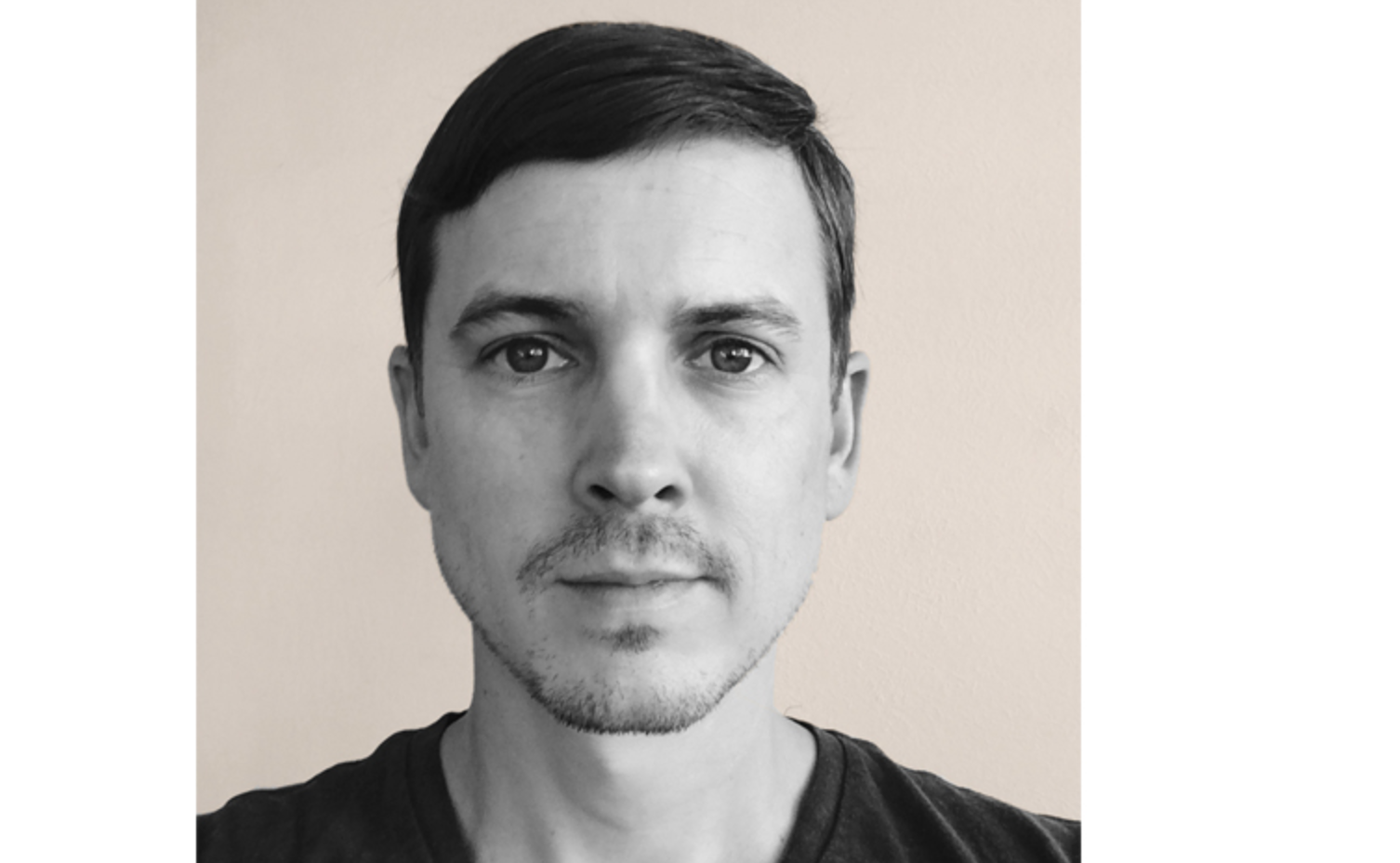
I enjoy the creative freedom that these competitions allow. While daily practice is incredibly rewarding, competitions such as this offer a chance to exercise my mind and explore design problems that I might not otherwise have the opportunity to delve into. They provide me the opportunity to research and explore a place and context that I may not otherwise have explored. I enjoy that. And I enjoy seeing other solutions to the same problem.
Read full interview United States
United States
Jury feedback summary
An important factor of parkland conservation is the necessity to share with visitors the wonders of nature, so that society, too, feels the need to protect its fragile and priceless resources. This project shows great potential to promote such interaction. With eye-level panoramic views and built-in seating, the submission invites lengthy and comfortable visits, camouflaging users so as not to alarm flying birds or wandering animals on the ground.
3rd Prize Winner
Līnija
We believe those open architecture vision competitions aim to reveal the liberty of conception, the freedom of questioning an architectural, social, geographical, cultural, political problem or context. It allows us to push forward through the boundaries of what the day-to-day architectural practice has to offer. It pushes beyond our practice to extend to global problems of a punctual question. In this way, it allows us to integrate the research in our professional practice and develop a scientific approach to any question. Furthermore, these competitions allow us to assert our ideas, envies and potential as young architects.
Read full interview France
France
Jury feedback summary
The design is comprised of two rectangular walls which appear opaque at acute and obtuse angles yet dematerialize at the perpendicular. The overall effect is striking and functional. It allows for clear views to the marshlands at all points within the enclosure while also screening animals from easily seeing visitors. The form is powerful and offers multiple levels of viewing platforms.
BB STUDENT AWARD
Halat

In order to gain experience as students. Also we like to have an area where we can express our interest in parametric design techniques.
Read full interview
BB GREEN AWARD
Gnomon
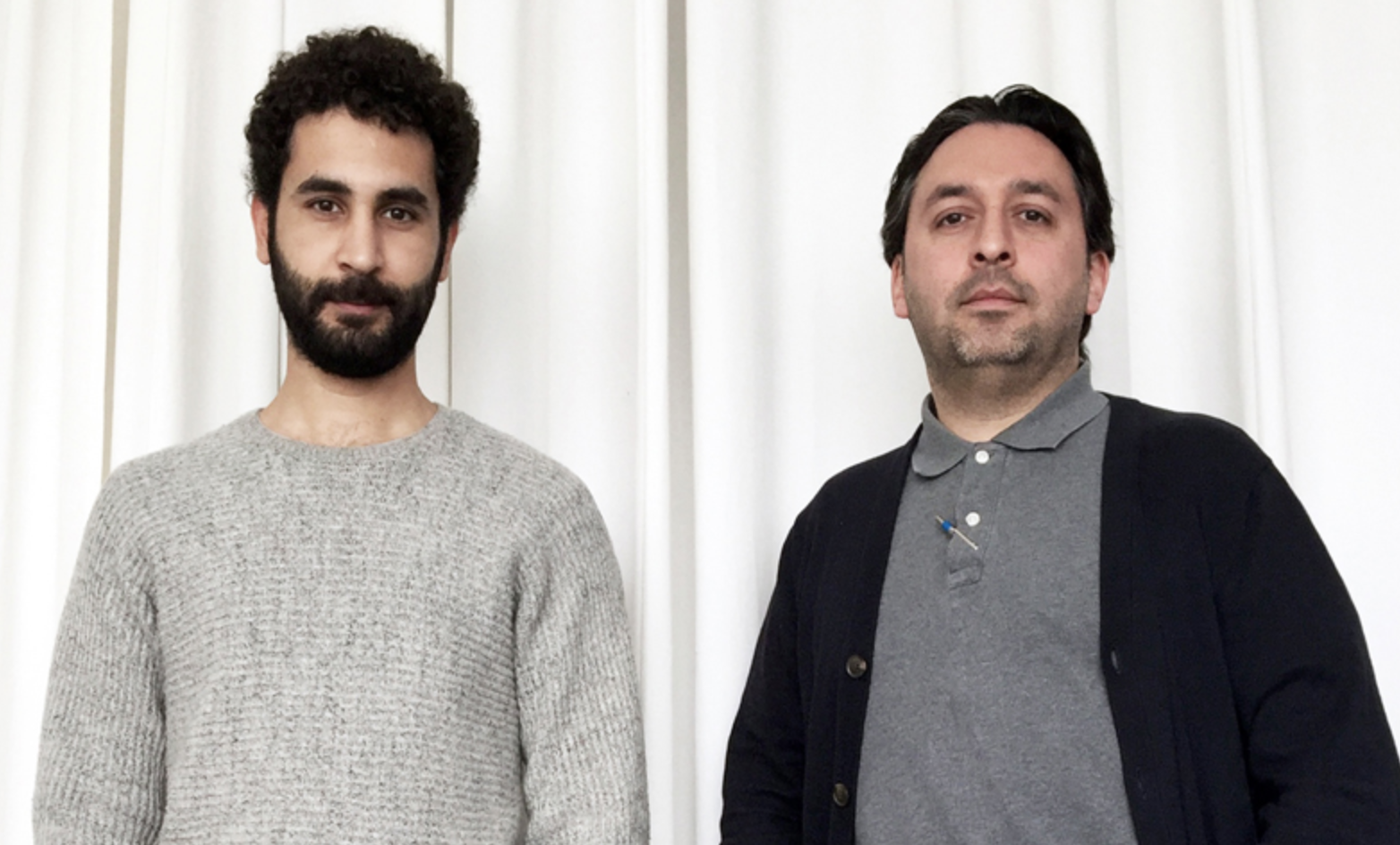
Currently, all of our ongoing projects are in Canada and to be specific in the Greater Toronto area; so we are trying to explore new contexts.
Read full interview Canada
Canada
Honorable mentions
Shortlisted projects
